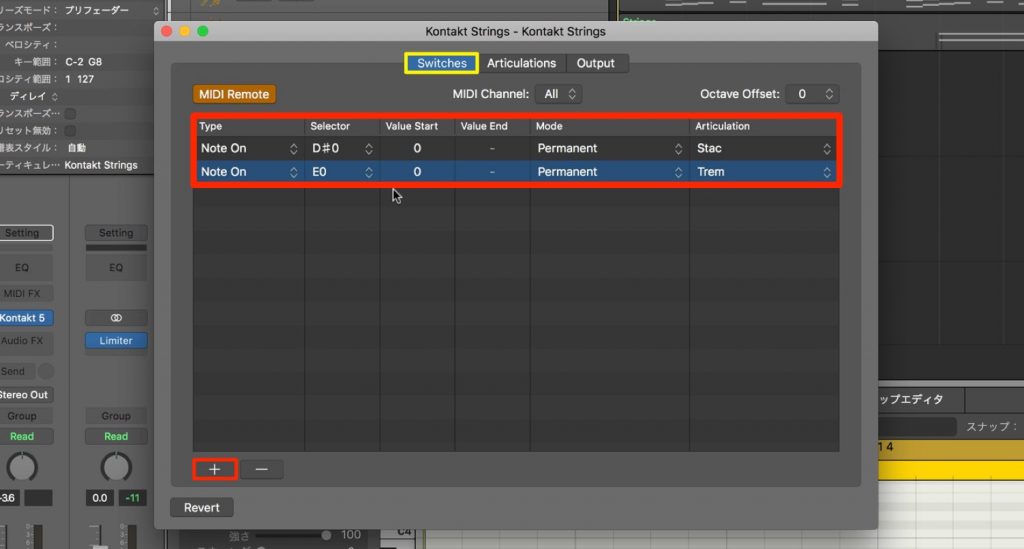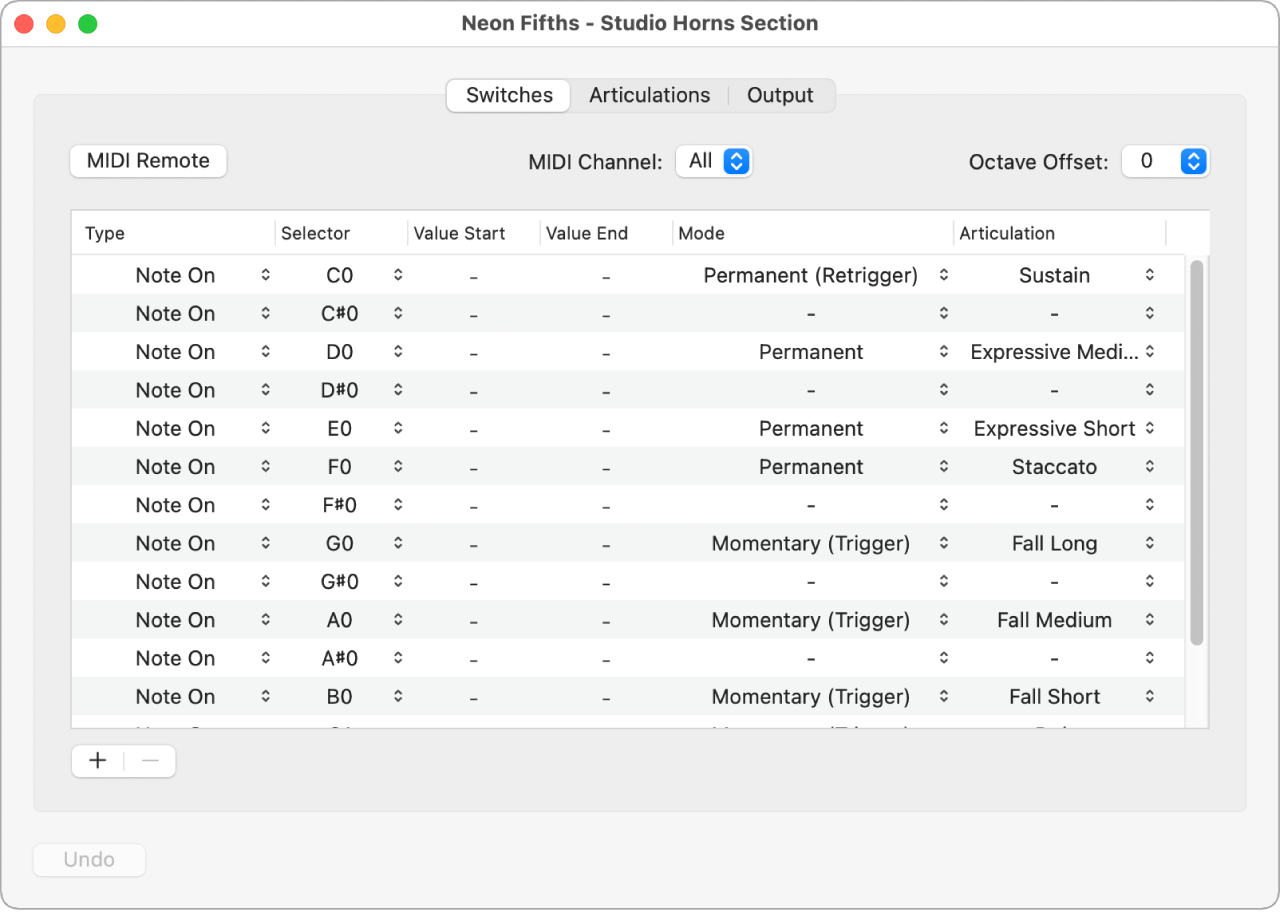
#ARTICULATION SWITCHING LOGIC PRO 10.4 HOW TO#
You sound kind of new to logic, so welcome! But I highly reccomend you get some reading or video materials to learn logic because it can get complicated enough to deal with routing and channels and multis and how to basically set up your daw. Then you have to setup play with each articulation listening on a different midi channel. So you can have up to 16 articulations which are routed to 16 midi channels. There is a channel parameter there for each articulation. In the articulation set editor you only need to concern yourself with the middle tab. Leave also on that pane the MIDI Remote disabled (unlit), its MIDI Channel to All and its Octave Offset to 0.

If you don't intend to perform live the articulation switching, leave the Switches pane parameters all to blank, except for the last column (Articulations). In the Output pane, there is no need to specify the type as Note On. In the Articulation pane, there is no need to set MIDI channels. The tracks inspector's MIDI channel parameter should be left to All. And each of these plugin instance have to be set to its distinct MIDI-in channel, corresponding to the articulation you programmed in the above mentioned Articulation Set Output pane.

If you are using MIDI-channel-driven-articulation-plugins (such as Native Instrument's Kontakt), those are to be instantiated on the stack's sub-tracks. In the Summing Stack, the master track should be hosting the Articulation Set, and onto which should be recorded the MIDI region to be played by the stack's sub-tracks. Normally, with the new Articulation introduced in LPX v.10.4 you wouldn't need the use of Stack. When I first introduced you to the Summing Stacks, I was in the impression from your (outdated) signature that you were using an older Logic version. It's with instruments where the different articulations that are on separate tracks that are at issue. The function woks very slick with instrument that normally uses key switches. I didn't see any other things that I was interested in knowing about. It didn't mention anything about switching between tracks for articulation switching. Well, Fernandrenaud, I did lookup Logic track stacks, where it showed the things you can do with it. So, you set up one or more of these articulation set machines, all 3 tabs, and take it from there. Not enough to handle some of the most loco 4 dimensional ideas library developers have come up with, but pretty good. It used to be that you needed third party scripts to do that, like SkiSwitcher converting the note's MIDI channel property to keyswitches.Ĭonsidering that it's a hemi-gluteal first pass at the issue, Logic's articulation sets are pretty flexible. Logic does the translation automatically according to what you've specified in the output tab of the GUI thing. It's where articulation data in the track is converted to keyswitches or other messages that your VIs respond to. That's where the translation machine spits out English for you. The input in Japanese or all the other languages has been converted to one common language, say Esperanto. You can view them by color in the piano roll. Internally - and only if you have an articulation set assigned to the track - Logic will encode those as Articulation IDs, a single byte from 0 to 255 I think, but maybe only up to 127, like most MIDI data. Then we have the middle section, that's where you've defined the articulations. So that's the input, say speaking Japanese into a translation machine. Modern libraries like Spitfire's can accept those instead of keyswitches. If you don't know what that is, you should read up. And you can use other switching standards like UACC or UACC KS rather than a MIDI note per articulation. It does not have to match the keyswitches your VI expects. You play boogie with your main keyboard and switch articulations on the fly with the baby keyboard. So you can use a nano keyboard and assign it to notes starting with the lowest MIDI note, C-2 (minus 2), or wherever you want.
The left tab is controls, how you select as you play. Think of the articulation GUI thing as representing a machine with input, internal process and output result.


 0 kommentar(er)
0 kommentar(er)
